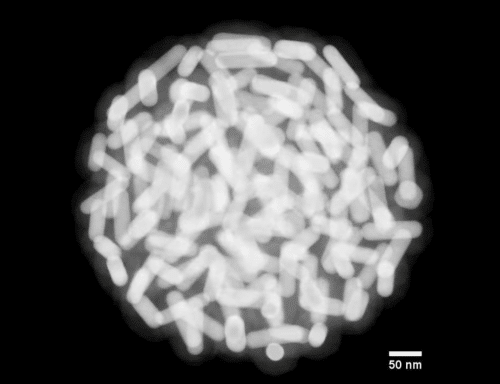Researchers at the University of Utrecht have invented a new sort of sensor that has the uncanny capacity to detect incredibly minute concentrations of molecules.
These sensors can detect and identify trace amounts of chemicals such as chemical contaminants or essential compounds in medicine. The sensors use Raman scattering, a technique that produces such distinct signals for different molecules that it’s sometimes referred to as ‘molecular fingerprinting.’
Lead researcher Professor Alfons van Blaaderen explains, “Our design relies on the assembly of gold nanorods, which enhance the Raman scattering of molecules placed close to their tips tens of thousand times, into a larger spherical cluster in which the Raman signals are even further enhanced. A crucial step in the preparation was to first wrap each gold nanorod in its own protective porous coating. By controlling the thickness and porosity of this coating, we were able to control how closely the nanorods could be packed together, and how easy or difficult it is for molecules to enter into the sensor.”
One of the main objectives was to combine the coated rods into a nano-sensor. Lead author Jessi van der Hoeven explains, “We wanted to controllably form a spherical cluster out of these rods, where so-called ‘hot spots’ for the Raman scattering would overlap and enhance the Raman signals even further. To do so, we put the rods in small water droplets. By slowly evaporating the water, the nanorods were forced to pack together into a spherical assembly.”

Using this approach, the researchers were able to prepare a whole range of differently structured nano-sensors. Lead author Harith Gurunarayanan adds, “We were excited to see that these nanorod assemblies were not only pretty structures, but also very good at detecting very small quantities of molecules, better than previous assemblies of gold nanorods.”
These supraparticles – particles made up of nanoparticles – are suitable for a variety of applications, ranging from investigating chemical mechanisms in catalysis to detecting trace amounts of chemical pollutants and molecules important in biology and medicine, thanks to the Raman scattering analysis’ finger-printing capabilities. It’s worth noting that portable Raman scattering equipment is already available, but at a high cost.
You can read their research paper here.







